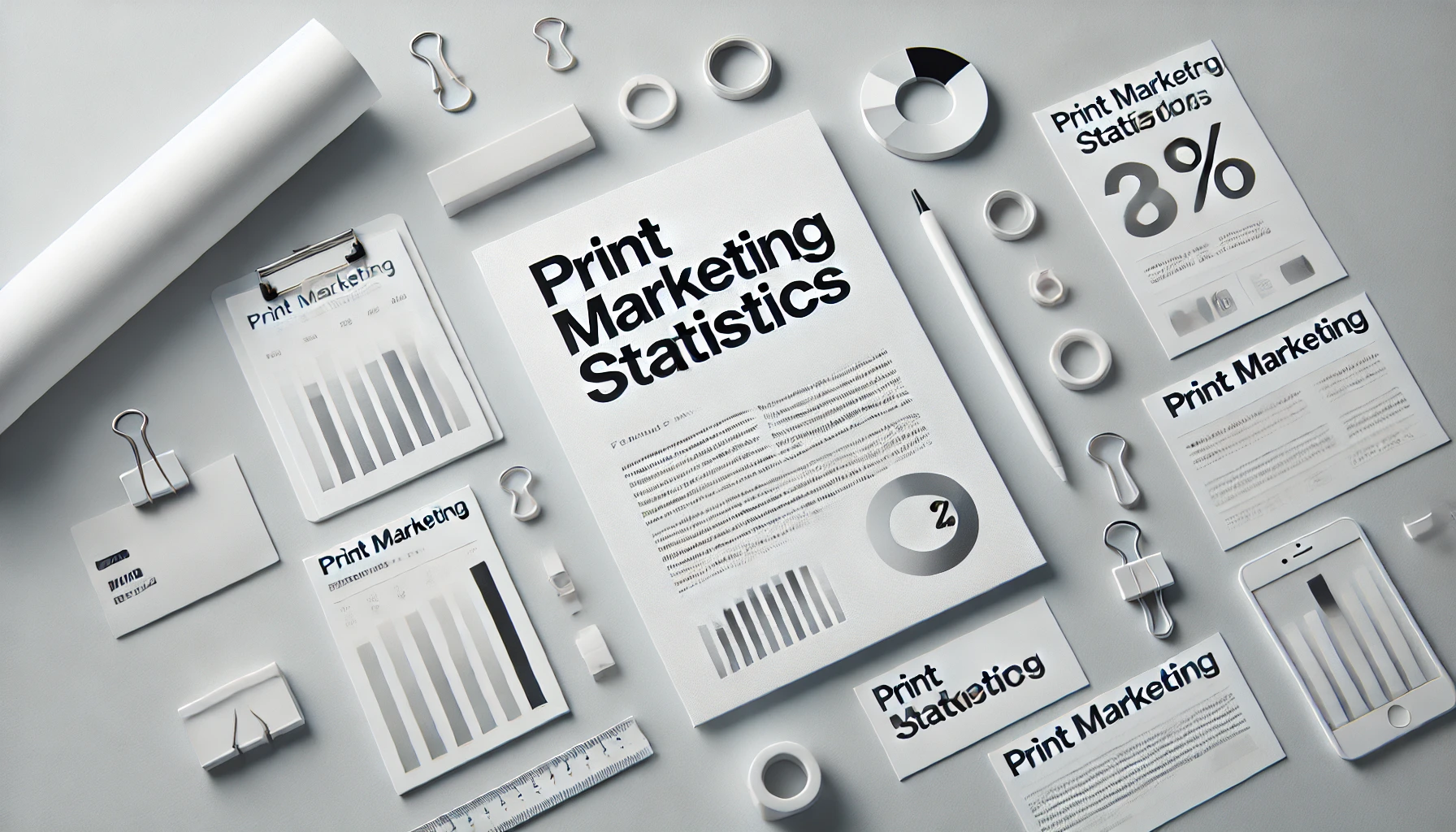Recruitment Statistics By Work Culture, AI, Cost Of Hiring, Interview, Challenges And Trends
Updated · Sep 20, 2024
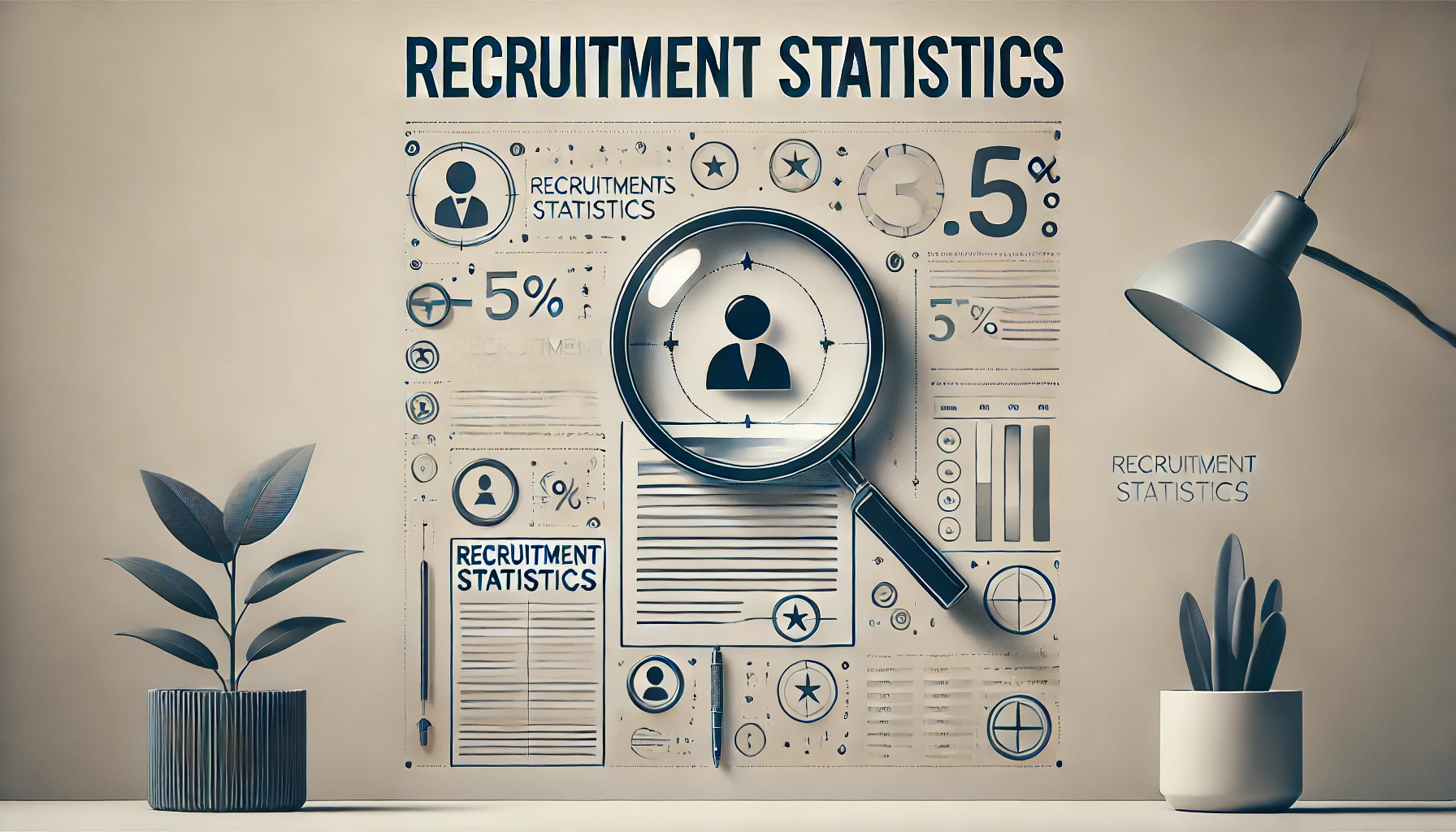
WHAT WE HAVE ON THIS PAGE
- Introduction
- Editor’s Choice
- What is Recruitment?
- Types Of Recruitment
- General Recruitment Statistics
- Work Culture Statistics
- Cost Of Hiring Statistics
- Recruitment Trend Statistics
- Employee Retention Hiring Statistics
- Most Visited Jobs And Employment Websites
- Remote And Hybrid Recruitment Statistics
- Interview Statistics
- Challenges In The Recruitment And Staffing Industry
- Recruitment Process Statistics
- Social Media Recruitment
- AI Recruitment Statistics
- Conclusion
Introduction
Recruitment Statistics: Finding the right candidate can take a lot of work for small businesses and job seekers. It often takes weeks to fill a position, and there’s no guarantee that the candidate will accept the job or stay long after starting. A positive hiring experience begins with research. By understanding how job seekers look for jobs, what they value, and their mindset, you can gain an advantage over competitors.
Taking the time to care about potential employees’ experiences shows them that you value them, making your small business more appealing. To effectively onboard candidates with the right skills, experience, and cultural fit, here are some important Recruitment Statistics.
Editor’s Choice
- 92% of candidates drop out during the application process.
- Recruitment Statistics stated that almost 37% of Americans believe that racial or ethnic bias is a significant issue in hiring.
- 53% of job seekers want recruiters to explain job expectations in descriptions clearly.
- 89% of job seekers think it’s important for employers to have a clear mission that is easy to find in job postings.
- 70% of US employees say they would consider leaving their current job for a new company that invests in employee learning and development.
- 94% of candidates are more likely to apply for a job if a company actively promotes its employer brand.
- Organizations with a strong onboarding process see an 82% increase in new hire retention and a productivity boost of over 70%.
- In 2023, recruiting teams spent 42% of their time scheduling interviews.
- Recruitment Statistics stated that around 60% of candidates reported having a bad experience during the hiring process, and 72% are likely to share their negative experiences with others.
- 77% of HR professionals think that human involvement in recruitment will be optional for a while.
- The global AI recruitment industry generated $206.4 million in revenue in 2022 and is expected to reach $323.2 billion by 2030.
What is Recruitment?
Recruitment is the process of finding, attracting, interviewing, selecting, hiring, and onboarding new employees. It involves everything from spotting a need for staff to filling that role.
In larger companies, whole teams may be dedicated to recruiting, while smaller businesses might have just one recruiter or even the hiring manager do it. Some organizations choose to hire outside firms to handle their recruitment. Most companies advertise new job openings on job boards, social media, and other platforms. Many also use recruiting software to help them find the best candidates more easily. Overall, recruitment usually works closely with or is part of the Human Resources (HR) department.
Types Of Recruitment
Here are the different types of recruiting explained:
- Internal Recruiting – Internal recruiting means filling job openings with current employees already working at the company.
- Retained Recruiting – In retained recruiting, a company hires a recruiting firm and pays a fee upfront to help find candidates for a specific position. The firm works only with that company until the job is filled, which means the company can’t use multiple firms for the same position.
- Contingency Recruiting – Contingency recruiting also involves an outside firm, but there is no upfront fee. The recruiting company is paid only when the organization hires one of its candidates.
- Staffing Recruiting – Staffing recruiters work for staffing agencies that connect qualified candidates with job openings. These agencies usually focus on short-term or temporary jobs.
- Outplacement Recruiting – Outplacement recruiting helps former employees find new jobs. This service offers support and resources to assist them in pursuing new careers.
- Reverse Recruiting – Reverse recruiting encourages employees to seek jobs at other companies that might be a better match for their skills.
General Recruitment Statistics
- Recruitment Statistics show that almost 90% of employers reported they were looking to fill new positions in 2021 as they adjusted to workplace changes.
- 75% of HR professionals believe there is a skills gap among job applicants.
- More than 35% of employees worldwide have used learning programs at work to explore new opportunities, and 91% of managers think these programs help close skills gaps.
- 66% of business leaders agree that effective education programs attract new talent.
- 50% of learning and development (L&D) professionals expect their recruiting budgets to decrease this year, while 66% think their L&D budgets will either increase or stay the same.
- 70% of US employees say they would consider leaving their current job for a new company that invests in employee learning and development.
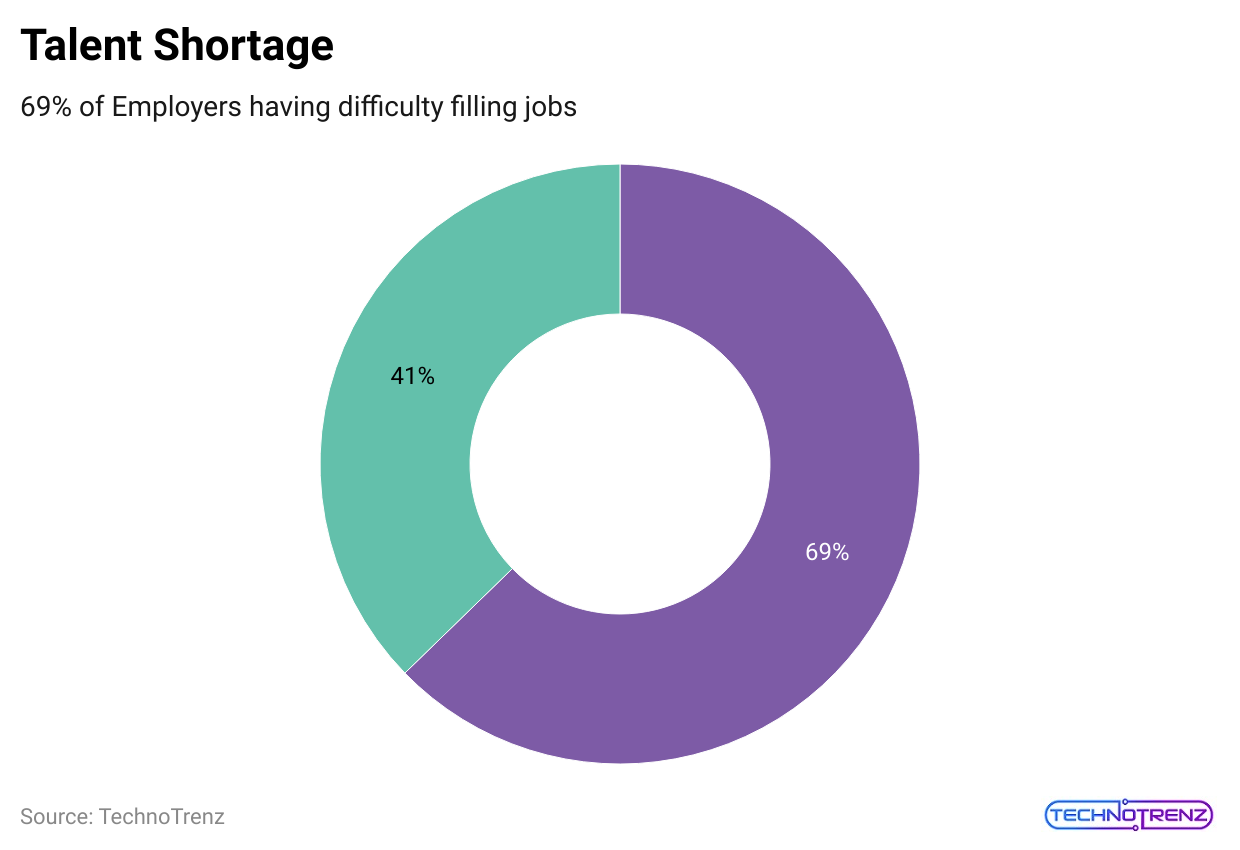
(Reference: talentlyft.com)
- By 2030, there could be a global shortage of over 85 million workers, which, if not addressed, could lead to a loss of $8.5 trillion in potential revenue.
- Recruitment Statistics stated that almost 51% of L&D professionals believe that focusing on internal talent is more important now than before COVID-19. Internal hires increased significantly in 2020 and now makeup nearly 20% of the average organization’s workforce.
- 82% of L&D professionals agree that engaged learners are more likely to find new roles within their company.
- Recruitment is an essential part of Human Resources (HR), so we’ve created a section to share key information about HR and the recruitment process.
- In 2023, almost 86% of HR professionals believe that recruitment is similar to marketing, making it a top priority for attracting talent.
- About 90% of HR experts feel that recruitment is more about promoting the business than anything else.
- As 36% of HR leaders noted, nearly 50% of organizations lack effective technology resources when it comes to finding top talent.
- In 2023, 50% of employees said they wouldn’t work for companies with a bad reputation, with 86% of women and 67% of men feeling this way. This highlights the need for companies to invest in marketing and branding to draw in talent.
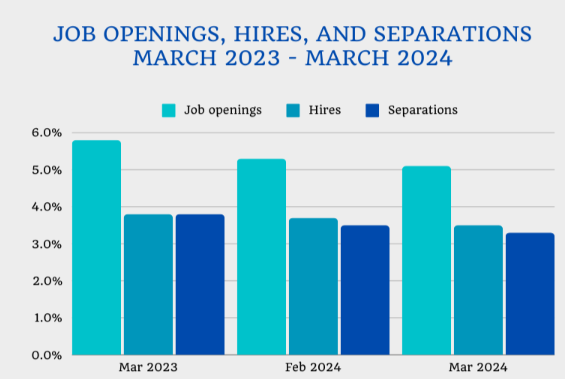 (Source: selectsoftwarereviews.com)
(Source: selectsoftwarereviews.com)
- 20% of HR executives view employee well-being as a priority for improving the workplace, compared to 15% of non-HR executives. This shows a significant trend in the HR field.
- Recruiters are increasingly focusing on showcasing the benefits of working for their companies, as per Recruitment Statistics.
- According to Glassdoor Reports 2023, about 86% of job seekers check ratings and reviews before applying for a job.
- Current HR trends indicate that positive reviews from past and present employees are crucial for any recruitment strategy. With these reviews, companies could retain 86% of potential candidates!
- 70% of employees want a sense of purpose in their jobs. Nearly three-quarters of employees are likely to return to work if they feel fulfilled. To attract job seekers, HR managers need to improve their management and recruitment strategies.
- 90% of job seekers consider the workplace environment important when deciding whether to accept a job offer. The interview experience also matters, highlighting the need for a positive candidate experience.
- HR professionals need help with competition when trying to hire the right employees. 49% of companies say that competition from other employers is their biggest challenge.
- Potential candidates often give up on long application forms. 92% will stop filling out applications that are too complicated, which poses a big challenge for HR. If the application process is too difficult, employers risk losing top talent.
- Only 36% of candidates feel that job descriptions are clearly written, while 72% of HR professionals believe they write clear descriptions. This gap shows the need for better communication between candidates and HR.
Work Culture Statistics
- 84% of recruiters say that cultural fit is a crucial factor in hiring.
- 25% of respondents cite better company culture as their top reason for changing jobs.
- Two-thirds of job seekers believe a diverse workforce is important when selecting a company.
- 79% of organizations focus on developing and promoting talent from within, while 48% are increasing recruitment from a limited labor pool.
- One-third of respondents wanted a new job for a fresh challenge, while only 19% prioritized a higher salary. Many were also seeking new opportunities due to job loss or concerns about job security.
- Recruitment Statistics stated that almost 72% of working Americans might leave their current jobs for a more inclusive company, and about 25% have already done so.
 (Reference: quantumworkplace.com)
(Reference: quantumworkplace.com)
- A survey of 1,300 full-time US employees found that an inclusive culture is vital for attracting and retaining talent.
- 80% of respondents believe that inclusivity is essential in hiring.
- 53% of millennials would switch jobs for a more inclusive workplace if they could find the same position elsewhere.
- Recruitment Statistics stated that almost 30% of millennials have already left jobs in search of a more inclusive environment.
- 33% of respondents left previous jobs for more inclusive workplaces because they felt uncomfortable being themselves. Other reasons included discomfort in speaking up and not experiencing inclusive daily interactions.
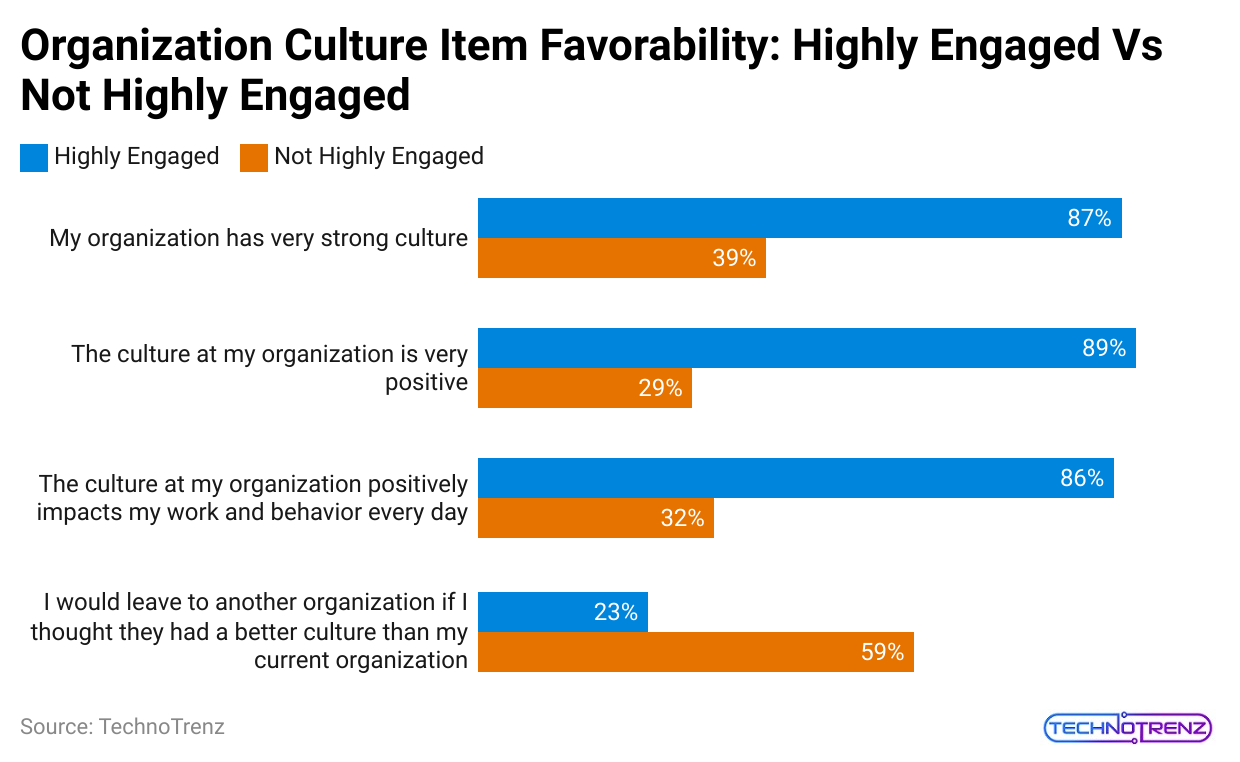 (Reference: quantumworkplace.com)
(Reference: quantumworkplace.com)
- 12% of respondents cited diversity in demographic groups as a reason for leaving their previous jobs.
- 47% of respondents believe the most significant feature of an inclusive workplace is the ability to be themselves.
- 32% feel that senior leadership has the biggest impact on workplace inclusion, while Recruitment Statistics stated that almost 34% believe everyone plays a role in fostering inclusion.
- 71% of people prefer organizations with leaders who regularly show inclusive attitudes over those who offer various initiatives without genuine commitment.
- 57% of recruiters have tailored their hiring strategies to attract diverse applicants.
- 52% of HR professionals say their companies keep employees even if they don’t fit the culture well.
Cost Of Hiring Statistics
- It takes 36 to 42 days to fill an average job in the US. “Time to fill” and “time to hire” are measured differently.)
- Keeping a job open costs about $98 per day.
- Recruitment Statistics state that the average cost to hire a new employee is $4,683.
- Hiring an executive is 505% more expensive than the average cost for all hires.
- Training a new worker at a small company costs about 98% more than at a large company, averaging $1,433 per year compared to $722 per year.
- On average, it takes 12 weeks for a new employee to become fully productive.
Recruitment Trend Statistics
- 86% of recruiters and 62% of employers agree that candidates have a strong influence on the job market.
- Recruitment Statistics stated that almost 73% of job seekers are passive, meaning they aren’t actively looking but are open to opportunities.
- Over 14% of candidates say a company’s values are the most important factor when deciding to apply for a job.
- 89% of job seekers find their smartphones essential for job hunting, with 45% using them every day.
- However, only a small percentage of companies have career websites that are fully optimized for mobile: 29% of the largest companies in Australia and even fewer elsewhere.
- Mobile devices account for 16% of all job applications.
- 74% of HR professionals use structured interviews as their main method for interviewing candidates.
- 82% of companies use pre-employment tests to evaluate applicants, as per Recruitment Statistics.
- 56% of companies offer signing bonuses to new hires from business schools, with an average bonus of about $10,500.
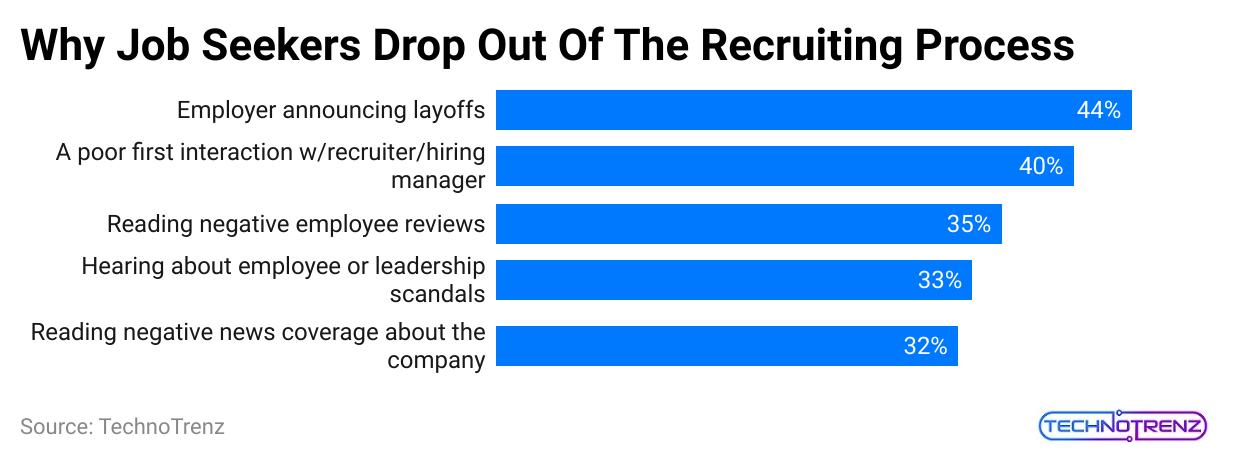 (Reference: recruitcrm.io)
(Reference: recruitcrm.io)
- 80% of survey respondents recognize the growing importance of soft skills like creativity and teamwork.
- 51% of companies plan to hire temporary workers, while 44% are looking for full-time employees.
- 54% of HR decision-makers expect their recruitment budgets to increase in the next year.
- Companies that plan to boost their recruitment budgets will focus on new technology (59%), job advertising (57%), and diversity programs (33%).
- Recruitment Statistics stated that nearly 45% of talent acquisition professionals intend to hire freelancers or gig workers.
- 92% of corporate recruiters are specifically looking for candidates with MBAs, and other advanced degrees are also highly sought after.
- Key skills that recruiters value include learning and motivation (62%), interpersonal skills (61%), and strategic thinking (60%).
- 60% of recruiters see online degrees as equal to in-person degrees.
- Nearly 61% of recruiters will focus on attracting higher-quality candidates in the coming year.
- Despite worries about the economy, 77% of employers did not reduce their hiring plans in 2022, and 60% expect to hire more in the next year.
Employee Retention Hiring Statistics
- 81% of job seekers believe that regular status updates from employers would greatly improve their experience.
- 40% of skilled candidates report a lack of communication between accepting a job and their first day.
- 55% of candidates think it should take 1 to 2 weeks from the first interview to receive a job offer, but it actually takes an average of 38 days.
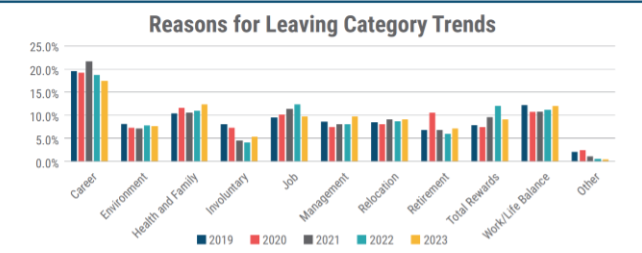 (Source: selectsoftwarereviews.com)
(Source: selectsoftwarereviews.com)
- The most important aspects of a positive job application experience include clear communication (58%), clear expectations (53%), and feedback on rejections (51%).
- 36% of women and 29% of men say flexible work arrangements are crucial when considering a job.
- 56% of companies pay for employees to receive skills-based training outside the workplace to help them move up within the organization.
- 89% of job seekers think it’s important for employers to have a clear mission that is easy to find in job postings.
- 82% of hiring executives consider candidate experience to be important.
- Recruitment Statistics stated that almost 52% of job seekers are frustrated by a lack of response from employers.
- Nearly 53% of job seekers want recruiters to explain job expectations in descriptions clearly.
- Almost 79% of job seekers consider a company’s mission before applying, with 66% finding motivation in it and 64% saying it’s a reason they stay in their current jobs.
Reasons for Leaving Jobs
- Lack of career development (22%)
- Poor work-life balance support (12%)
- Manager behavior (11%)
- Unsatisfactory pay and benefits (9%)
- Poor well-being (9%) (G2.com)
- Among HR professionals struggling to retain older workers, 47% cite inflexible work locations as the biggest challenge, followed by career inflexibility (45%) and inflexible work hours (44%).
- Family status influences job-seeking behavior. Married employees are less likely to look for new jobs than single employees, but those with children are more likely to search.
- 64% of potential employees are starting to use contract work and the gig economy to supplement their income.
Most Visited Jobs And Employment Websites
` (Reference: statista.com)
- When it comes to job hunting today, the internet is the best resource.
- A survey by Pew Research shows that 79% of Americans used online tools during their last job search.
- However, traditional methods still matter; 66% of respondents found jobs through connections with friends or family.
- Conversely, employment agencies and print ads are becoming less useful, with only 32% of job seekers using them recently.
#1. Indeed.com
- Average Pages per User: 8.65
- Bounce Rate: 34.87% (people leaving quickly)
#2. MyWorkdayJobs.com
- Average Pages per Visit: 4.22
- Bounce Rate: 38.03%
#3. Computrabajo.com
- Average Pages per User: 15.18 (shows strong user interest)
#4. HH.ru
- Average Pages per Visit: 7.1
- Bounce Rate: 32.65%
#5. Glassdoor.com
- Average Pages per Visit: 3.68
- Bounce Rate: 47.32% (higher than others)
#6. ZipRecruiter.com
- Average Pages per Visit: 4.51
- Bounce Rate: Higher than average
#7. Gupy.io
- Average Pages per Visit: 5.71
- Bounce Rate: Higher than average
#8. Ultipro.com
- Average Pages per Visit: 5.15
- Bounce Rate: 29.14% (low bounce rate)
#9. Jooble.org
- Average Pages per Visit: 4.73
- Bounce Rate: 32.55%
#10. Seek.com.au
- Average Pages per Visit: 7.9
- Bounce Rate: 33.59%
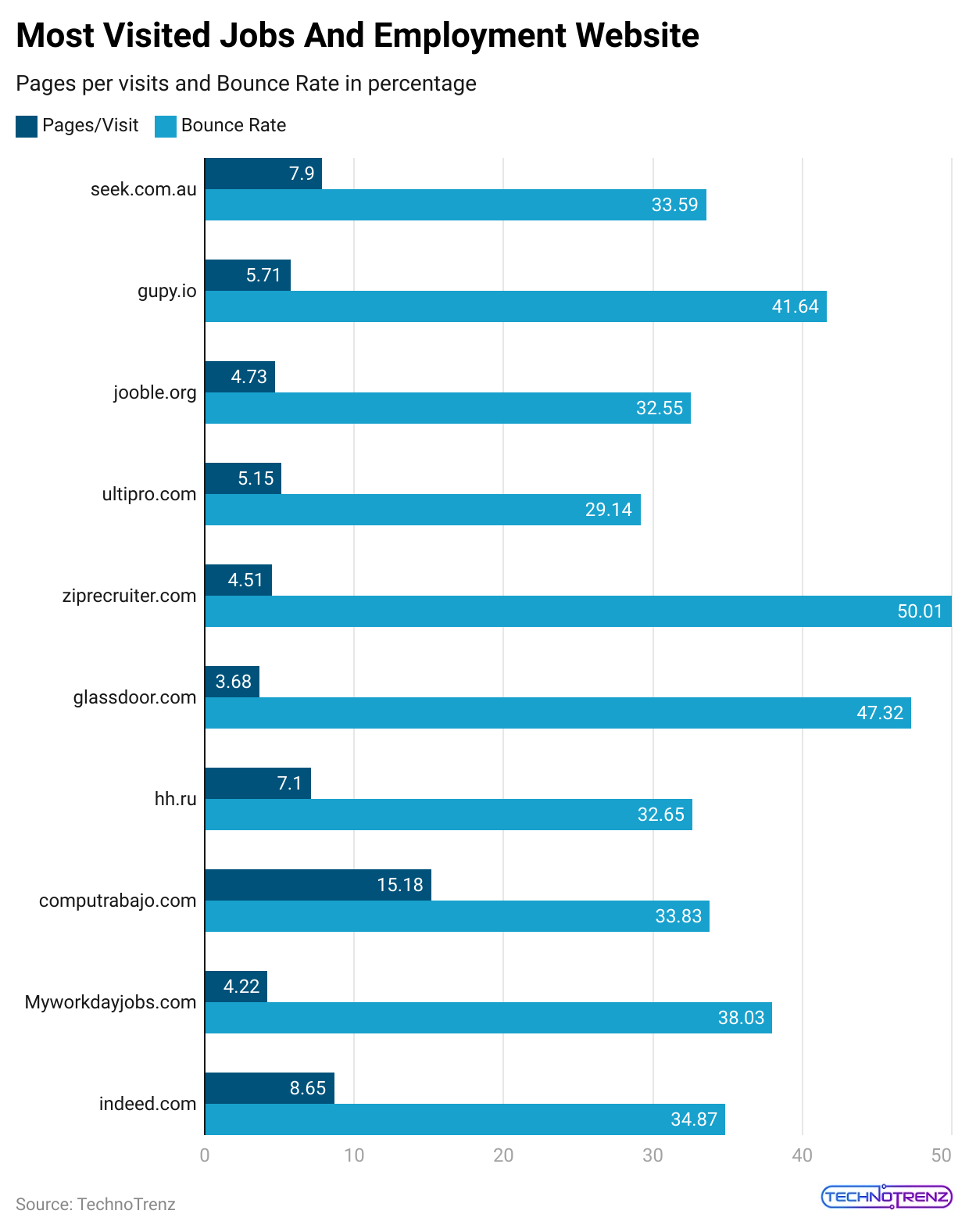 (Reference: scoop.market.us)
(Reference: scoop.market.us)
| Website | Pages/Visit | Bounce Rate |
|
seek.com.au |
7.9 | 33.59% |
| gupy.io | 5.71 |
41.64% |
|
jooble.org |
4.73 | 32.55% |
| ultipro.com | 5.15 |
29.14% |
|
ziprecruiter.com |
4.51 | 50.01% |
| glassdoor.com | 3.68 |
47.32% |
|
hh.ru |
7.1 | 32.65% |
| computrabajo.com | 15.18 |
33.83% |
|
Myworkdayjobs.com |
4.22 | 38.03% |
| indeed.com | 8.65 |
34.87% |
Remote And Hybrid Recruitment Statistics
- Remote work has transformed how companies hire and attract top talent.
- As remote work becomes more common, job seekers are increasingly looking for positions that allow them to work from home or offer more flexibility. Virtual recruitment has become essential in recent years.
- About 61% of recruiters think video interviews will completely replace face-to-face ones.
- Currently, around 86% of interviews are already done online, according to recruitment statistics.
- Over 86% of employees prefer remote or hybrid jobs.
- 83% of companies support this, saying remote work has improved their flexibility, saved them money, and helped them find talent.
- Additionally, 95% of employers report that productivity did not drop while working remotely, and 51% noticed increased productivity.
- 68% of hiring managers say candidates often ask for work-from-home options.
- Moreover, 54% of candidates have turned down interviews or job offers because there weren’t remote work options.
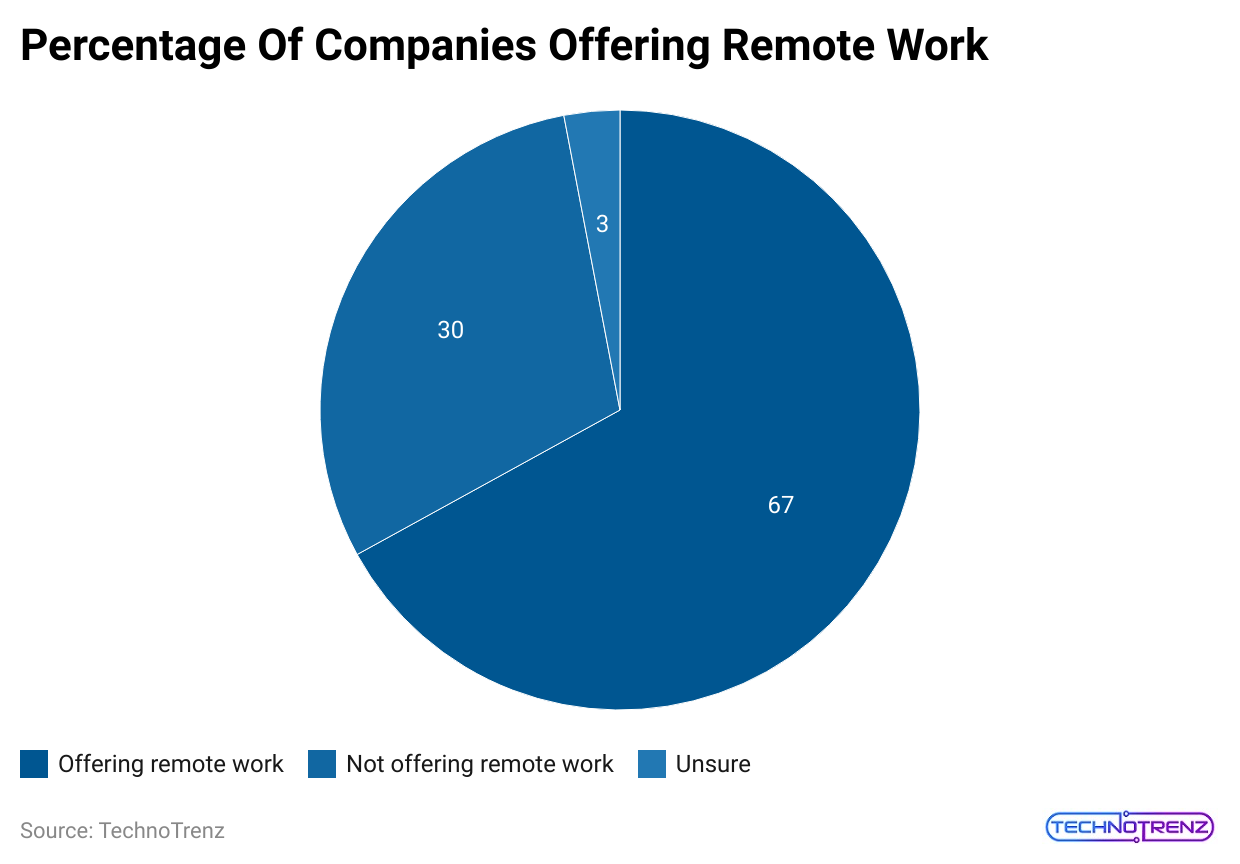 (Reference: financesonline.com)
(Reference: financesonline.com)
- Two-thirds of remote workers say they would return to the office if their commute were paid for.
- Remote workers scored 75 out of 100 on the Workforce Happiness Index, while in-office workers scored 71.
- Recruitment Statistics stated that about 66% of employers worldwide are redesigning their offices for hybrid work.
Interview Statistics
- Interviewing takes a lot of time for most employers.
- On average, companies spend two-thirds of their time on the hiring process, which usually takes about 3 to 4 weeks. Only 25% of companies can fill positions within two weeks.
- Once interviews start, decisions are often made quickly. 52% of interviewers decide on a candidate within just 5 to 15 minutes.
Top dealbreakers for employers:
- 71% say lying is a major dealbreaker.
- 67% dislike candidates texting during the interview.
- 51% find swearing unacceptable.
- 50% think inappropriate clothing is a red flag.
- 48% don’t like candidates who speak negatively about previous employers.
- 45% are put off if candidates know nothing about the job or the company.
As per Recruitment Statistics, these behaviors made candidates less appealing:
- 20% dislike talking badly about past employers.
- 19% are bothered by poor body language.
- 16% find unprepared candidates off-putting.
- 15% dislike a lack of understanding about the business.
- 15% are concerned about unclear career histories.
- 3% think unprofessional clothing is a problem.
For video interviews:
- 88% of recruiters say that internet lag is their biggest annoyance.
- 95% prefer cool lighting over warm lighting.
- 97% like an office-themed background if candidates use a virtual background.
Body language matters during interviews. Here are common mistakes candidates make:
- 68% of employers dislike it when candidates don’t make eye contact.
- 38% want candidates to smile.
- 32% find excessive fidgeting distracting.
- 31% disapprove of poor posture and crossing arms.
- 22% think a weak handshake is a problem.
- In a study, 80% of video interviewees who didn’t get an offer seemed distracted or disengaged, and 42% read from notes too much.
- Interviews are also about the candidate’s experience.
- 63% of candidates are unhappy with how employers communicate during the application process, and only 25% feel their experience as a candidate is good.
- Nearly 69% of candidates who had a negative experience wouldn’t apply to that company again.
- Finally, 60% of applicants have quit an application that took too long.
Challenges In The Recruitment And Staffing Industry
The biggest challenges for recruiting firms are:
- 56% are struggling with limited talent pools.
- 33% are worried about economic uncertainty.
- 28% are facing reductions in job requirements.
- Concerns about the shortage of talent have increased since 2021, with 10% more people citing it as a major worry in 2023 compared to 2022.
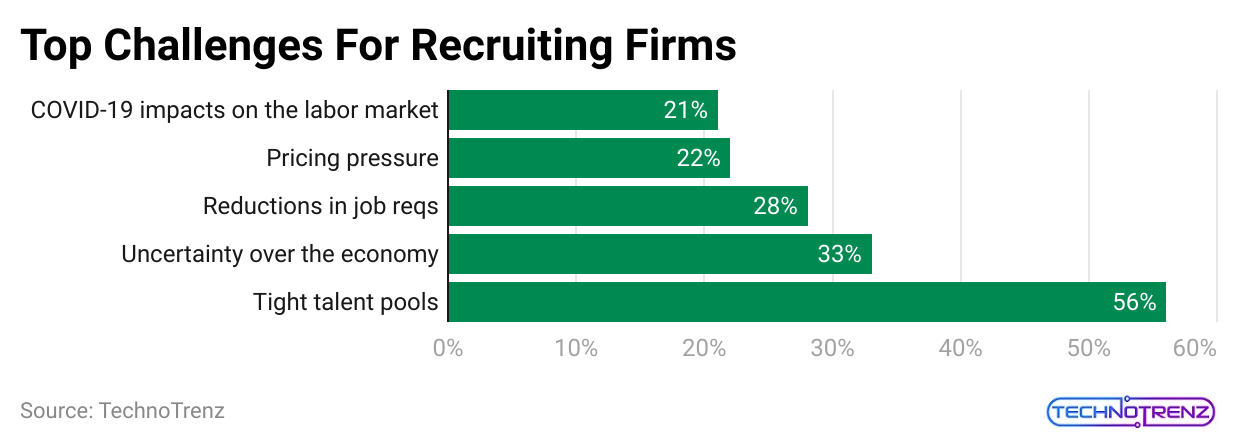 (Reference: altline.sobanco.com)
(Reference: altline.sobanco.com)
- The biggest challenge for getting new clients is the rise in competition, which affects 25% of companies. The second challenge is hiring freezes and budget limits from potential clients, which impact 23%.
- Candidates’ main reason for giving up on working with a staffing firm is that the process needs to be faster.
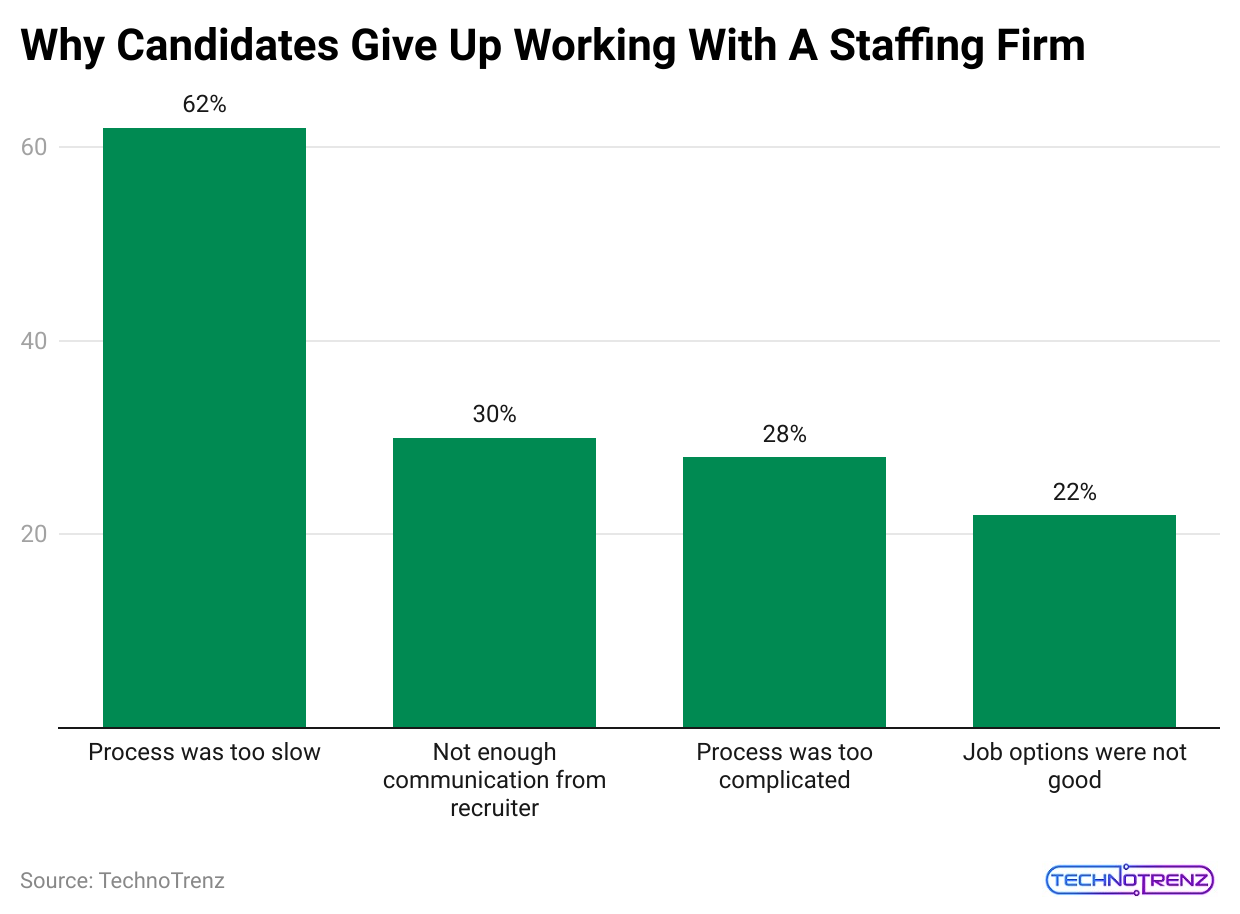 (Reference: altline.sobanco.com)
(Reference: altline.sobanco.com)
- One-third of candidates believe the hiring process fails because the credentialing or licensing was too complicated or not handled properly.
- Almost 25% feel it’s because recruiters paired them with jobs that needed to be a better match.
- The main challenge in recruitment is still sourcing candidates, which accounts for 28% of issues, followed by screening and validating at 12%.
- Recruitment Statistics stated that almost 52% of recruiters say job boards need to be more effective.
Recruitment Process Statistics
- On average, a corporate job posting gets 250 resumes.
- It typically takes 36 days to fill a new job position.
- Top talent is hired ten days faster than the average candidate.
- Recruitment Statistics stated that only 10% of recruiters regularly update their hiring processes.
- 72% of hiring managers say they provide clear job descriptions, but only 36% of candidates agree with this.
- Employee referrals have the highest success rate for turning applicants into hires at 3.3%.
- 67% of employers and recruiters consider removing candidates from the hiring process because of too many social media posts.
- 95% of recruiters use LinkedIn to find potential candidates.
- Nearly 87% of recruiters check candidates on LinkedIn during the hiring process.
- Recruitment Statistics stated that about 70% of employers use social media to screen applicants.
- Roughly 84% of organizations are currently looking for new hires.
- The average hiring cost in the US is $4,129.
- Employers spend about six seconds reviewing each resume.
- Almost 89% of hiring failures happen due to a poor cultural fit.
- A flawed recruitment process can scare away top candidates.
- Recruitment Statistics stated that almost 82% of employers think that cultural fit is very important when hiring.
- Around 75% of candidates have yet to receive any feedback after applying.
- 57% of job seekers apply for jobs that have yet to be advertised.
- Almost 85% of jobs are filled through networking.
- 70% of employers check candidates’ social media profiles during the hiring process.
- Employees with multiple skills are 83% more likely to be hired than those with only one skill.
- Employers lose about $14,900 for each bad hiring decision, as per Recruitment Statistics.
Social Media Recruitment
- 79% of job finders used social media to find jobs in the past year.
- 50% of all workers in the UK can contribute to credit social media for helping them land their last jobs.
- 91% of managers are presently using social media in their recruitment process.
- 21% of recruiters say they have rejected candidates after checking their Facebook profiles.
- Millennial job finders are the more active people, with 85% using social media for job hunting.
- Those over 55 are the minimum active, with only 30% using social media to search for jobs.
- The least active job seeker is a 56-year-old tradesperson.
| Age group (years old) | % using social media in job search |
| 56+ |
30% |
|
40-55 |
52% |
| 31-40 |
85% |
|
21-30 |
86% |
| 16-20 |
66% |
| Industry | % using social media in job search |
| Health & wellbeing |
67% |
|
Marketing |
69% |
| Creative & arts |
75% |
|
Retail |
78% |
| Hospitality |
84% |
| Industry | % using social media in job search |
| Engineering |
42% |
|
Accounting & Finance |
40% |
| Banking |
36% |
|
Security |
32% |
| Tradespeople |
29% |
| Earnings bracket (per annum) | % using social media in job search |
| £70,000 + |
61% |
|
£50,000 – £70,000 |
63% |
| £30,000 – £50,000 |
40% |
|
£18,000 – £30,000 |
55% |
| < £18,000 |
71% |
| Employment status | % using social media in job search |
| Part-time employed | 25% |
|
Casual worker |
42% |
| Contractor |
70% |
|
Full-time employed |
74% |
| Freelancer |
91% |
- Job seekers can use different social media platforms in many ways during their job hunt. They can apply for jobs, research potential employers, and much more. Here’s how candidates are using social media in their job searches:
| Social media platform | % of job seekers using |
| YouTube | 22% |
|
|
29% |
|
40% |
|
|
Glassdoor |
42% |
|
57% |
|
|
|
90% |
- It’s not surprising that LinkedIn is the famous social media platform for job finders, with 95% of the public using it during their careers.
- LinkedIn, Twitter, Glassdoor, and Facebook are the top four job-search platforms, and they are the only ones that let users apply for jobs directly.
- The main reason job seekers use YouTube is to make video resumes, as per Recruitment Statistics.
- Over 75% of job seekers have done this in their careers. Also, 10% of people have made posts on social media that will impress employers.
| Activity | % of job seekers doing this |
| Making content to motivate employers (blogs, portfolios etc.) |
11% |
|
Contacting recruiters or hiring managers |
51% |
| Applying for jobs |
70% |
|
Researching prospective employers |
77% |
- 72% of millennials state their last job from a social media platform, as per HR Magazine.
- 91% of managers are presently using social media as a section of their recruitment process.
- The following markets are recruiting through social media at most:
| Market | % of firm’s recruiting via social media |
| IT |
IT% |
|
Retail |
75% |
| Management consulting |
79% |
|
Hospitality |
80% |
| Marketing |
86% |
- Following are the industries that recruit via social media at least
| Market | % of organizations recruiting via social media |
| Legal |
51% |
|
Education |
45% |
| Staffing |
42% |
|
Accounting & Finance |
38% |
| Construction |
32% |
| Organization size (count of workers) | % of companies recruiting via social media |
| Large (250+) |
97% |
|
Medium (50-250) |
90% |
| Small (0-49) |
52% |
- LinkedIn is the top site for recruiting, with 91% of organizations using it every day.
- The biggest reason recruiters go on social media is to look for candidates, and 100% of social recruiters use LinkedIn for this purpose.
AI Recruitment Statistics
- 9% of people believe AI will become more important at work, while only 4% expect it to decrease.
- The AI recruitment industry is valued at $590.50 billion as of 2023.
- The enterprise AI recruitment sector is expected to grow at 6.17% each year from 2023 to 2030.
- The global AI recruitment market is projected to reach $942.3 million by 2030.
- 1% of people see more use of AI algorithms in recruitment.
 (Reference: contentdetector.ai)
(Reference: contentdetector.ai)
- The AI recruitment industry grew significantly by 64.45% from 2020 to 2023. Experts predict that by the end of 2023, this market will reach $942.3 million.
| Year | Market Size Growth |
|
2030 |
$942.3 million |
| 2023 |
$590.5 million |
|
2022 |
$540.4 million |
| 2021 |
$470.3 million |
|
2020 |
$380.6 million |
- The table above shows the significant growth in the AI recruitment industry from 2020 to 2030.
- It starts with a small market size of $380.6 million in 2020 and predicts it will rise to $942.3 million by 2030.
- This highlights how quickly AI is becoming important in hiring. The steady yearly growth also shows how AI AI is changing recruitment methods worldwide.
- 88% of companies around the world have been using AI technology in HR, including hiring, since before COVID.
- Roughly 24% of companies use AI to find skilled workers.
- Recruitment Statistics show that, as of 2024, almost 60% of organizations are using AI to manage their talent.
- About 44.2% of people report that AI AIs greatly sped up the hiring process.
- 44% of recruiters and 67% of hiring managers see AI as a time-saver.
- Nearly 72% of recruiters think AI is most helpful for finding candidates.
- Hilton managed to cut its hiring time by 90% using AI.
 (Reference: contentdetector.ai)
(Reference: contentdetector.ai)
| Region | Cost Cutting |
|
Asia Pacific |
25% |
| Europe |
36% |
|
North America |
40% |
| Rest of the World |
20% |
- AI in HR processes is highest in North America, leading to a significant 40% drop in costs.
- The global AI recruitment industry generated $206.4 million in revenue in 2022 and is expected to reach $323.2 billion by 2030.
- Europe is close behind, with a 36% reduction in costs in 2022.
- 7% in this field give mostly positive feedback about AI AI hiring.
- Almost 67% of HR professionals feel that AI has a positive influence on recruitment.
- Recruitment Statistics stated that almost 66% of US adults would not want to apply for a job if AI is involved in hiring.
- Roughly 37% of Americans believe that racial or ethnic bias is a significant issue in hiring.
- 2% need help trying to integrate AI into their systems.
- Around 35% of recruiters worry that AI AIght miss candidates with special skills.
- 5% of HR Leaders are afraid AI Will take over their jobs, and 24% of workers worry that AI Will make their jobs obsolete.
 (Reference: contentdetector.ai)
(Reference: contentdetector.ai)
- Key challenges include hiring bias (40%) and data privacy issues (37.2%).
- 68% of recruiters think AI will help remove unintentional bias.
- Nearly 43% of HR professionals find candidate screening the hardest part of their job.
- According to recruitment statistics, almost 76% of people would be fine with being onboarded by AI.
- AIany expects AI to greatly change hiring processes.
- Recruitment Statistics show that almost 79% of recruiters believe AI will soon make hiring and firing decisions.
- Around 31% would accept AI AIking hiring choices, while 75% would agree if a human is also involved.
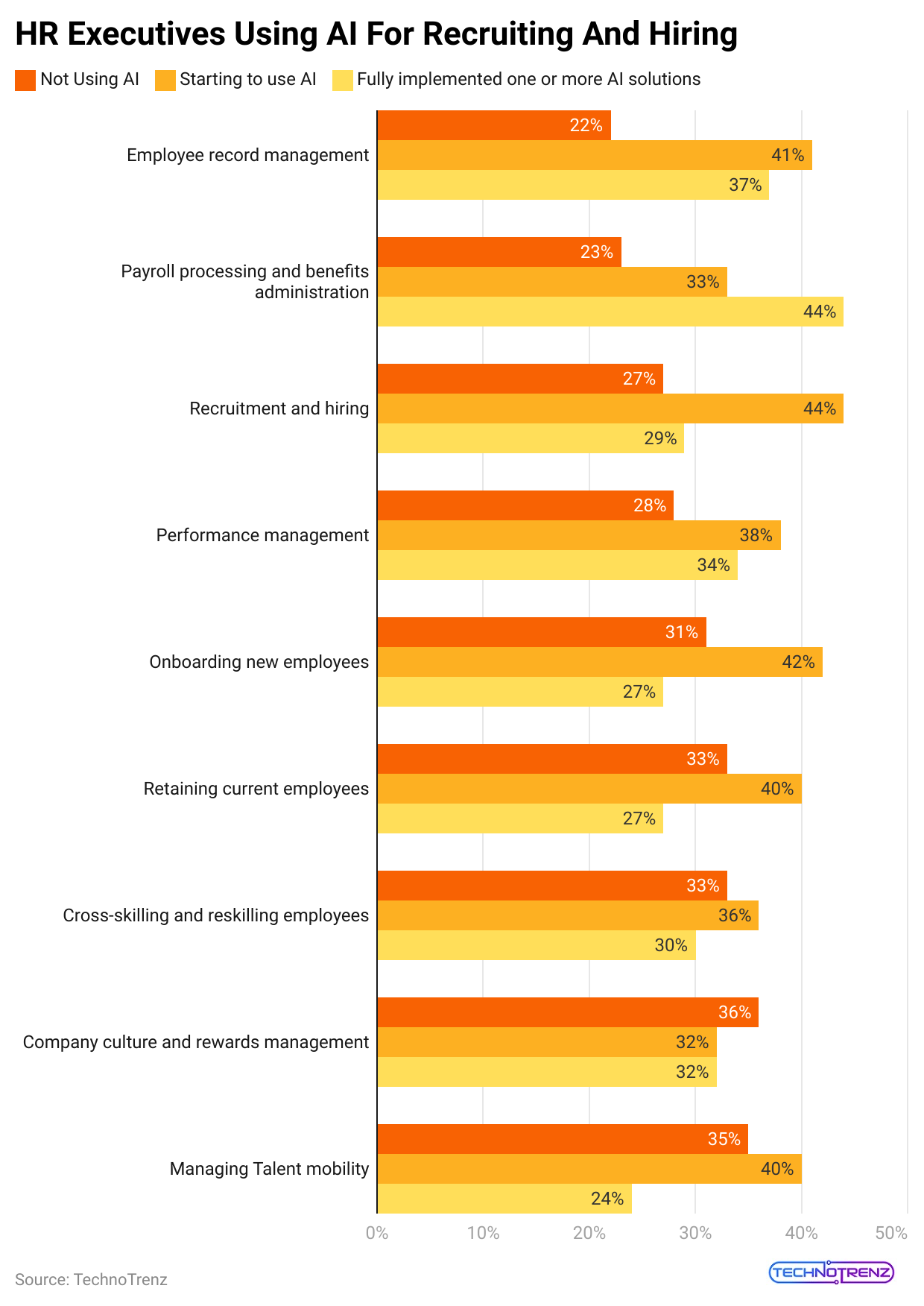 (Reference: contentdetector.ai)
(Reference: contentdetector.ai)
| HR Executives using AI | Not Using AI | Starting to use AI | Fully implemented one or more AI Solutions |
| Managing Talent mobility | 35% | 40% |
24% |
|
Company culture and rewards management |
36% | 32% | 32% |
| Cross-skilling and reskilling employees | 33% | 36% |
30% |
|
Retaining current employees |
33% | 40% | 27% |
| Onboarding new employees | 31% | 42% |
27% |
|
Performance management |
28% | 38% | 34% |
| Recruitment and hiring | 27% | 44% |
29% |
|
Payroll processing and benefits administration |
23% | 33% | 44% |
| Employee record management | 22% | 41% |
37% |
- 77% of HR professionals think that human involvement in recruitment will be optional for a while.
- Industries like construction and IT Are likely to boost spending on AI.
- According to Recruitment Statistics, 5.5% of small and medium businesses are setting aside money for AI Recruiting tools.
- Nearly half of 600 surveyed firms plan to increase their spending on data systems and AI by more than 25% next year.
Conclusion
With many job boards and platforms available, it’s interesting to see that most employees are still looking for new jobs, whether actively or passively. Recruitment statistics indicate that 22% of employers are constantly seeking new hires. The use of social media has increased in the job market, as today’s candidates use these platforms to search for and apply for jobs.
After COVID, 86% of professionals want to work remotely at least a few days a month, and 61% of recruiters expect virtual interviews to become common by 2024.
Sources
FAQ.
To calculate time-to-hire, count the number of days from when a candidate enters your hiring process until the day you hire them. To find the average time-to-hire, add the time-to-hire for each open position and then divide by the total number of positions.
Role analysis is the basis for creating the job description and setting the necessary standards, such as skills, knowledge, and experience required to perform the job effectively.

Saisuman is a professional content writer specializing in health, law, and space-related articles. Her experience includes designing featured articles for websites and newsletters, as well as conducting detailed research for medical professionals and researchers. Passionate about languages since childhood, Saisuman can read, write, and speak in five different languages. Her love for languages and reading inspired her to pursue a career in writing. Saisuman holds a Master's in Business Administration with a focus on Human Resources and has worked in a Human Resources firm for a year. She was previously associated with a French international company. In addition to writing, Saisuman enjoys traveling and singing classical songs in her leisure time.











